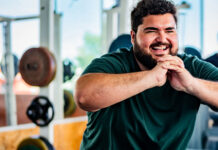Thomas Rivers Puzey was still in university when he stumbled across a new way of training for long-distance running. The collegiate cross-country runner laced up for a local trail race in Costa Rica. He got his butt kicked. Anthropological curiosity led him to connect with the locals to find out how they prepared. It turns out that after the Ticos finished their day jobs, they would hike tourists’ 60-pound backpacks up the mountain by the light of the moon.
So Rivers, and later his brother, Jacob Puzey, joined them to hike. They’d make their way up to the mountain top with backpacks, take a break for refreshments, then run back down. With the focus on hiking in their training, both brothers noticed gains in their running.
“I don’t know that there’s a way to quantify it, but it’s indisputable,” says Puzey. “When people take the time to hike, it not only makes them more efficient hikers, it usually makes them more durable and more efficient runners as well.”
When training for a long run, hiking probably isn’t the first activity to come to mind. But as more runners are discovering, hiking could be just the key to unlocking a personal best in your ultra or marathon.
Hiking is one of the main activities runner and trainer Erica Van Vlack recommends her athletes incorporate into their training plans. She’s helped athletes prepare for races like Yukon’s trail ultra, Reckless Raven and the winter’s Yukon Arctic Ultra. She says it helps runners understand pacing and its importance through varying terrain.
Van Vlack says when runners start getting into longer distances in their training, they get “feet-happy.”
“They get super excited on downs and flats and they start to fly. But then as soon as you have to climb, you’re gassed,” she says. “That’s where pacing is so important.”
Hiking teaches pacing in a safe environment where your body isn’t heavily taxed.
Once you get comfortable with your hiking pace, you know how fast you can move uphill, then on the flats and downhills, you go at your running pace.
This is especially important for runners who are new to longer distances. “[They] will get discouraged in the distance stuff because they’ll be like, ‘I hit a hill and I’m gassed,’ and their legs will cramp up,” she says. “That’s what you don’t want to happen, especially early on in their race. That’s a big lesson that takes a lot to teach people in running, so hiking teaches it at a safe pace so they don’t hit a wall and get discouraged.”
Hiking isn’t the “sexiest” of training options, notes Puzey, but it’s where many gains can happen. Most of the athletes he works with are short on time, so they’re looking to maximize gains in the least amount of time.
“Whether they’re training for a marathon or a trail race, most people think that they need more stimulus, not less,” he says. “They don’t realize that it’s in the slow and easy monotonous stuff that the gains are made.”
He recommends incorporating hiking into weekly or monthly long runs. Rather than a three-hour continuous long run, perhaps you go for five hours and you hike two or three of them. “So you’re actually spending significantly more time and you’re still running, but you’re also practising those transitions,” he says.
How did hiking in Costa Rica affect Puzey’s fitness? About a month later, he tackled his first 50-mile trail race. It turned out to be exactly what he needed.
You May Also Like
Training Plans

Read This Story in Our 2022 Summer Outdoor & Travel Digital Edition
Cold Water King, Core-Centric Fitness, Prepare for Hiking Season, Mountain Bike Fundamentals, The Simple Ways Movement Gives Us ‘Hope’, recipes and much more!

















